The Cannondale Scalpel HT Carbon 4 is the brand’s hardtail cross-country mountain bike designed for racing.
This model is the most affordable in the Scalpel line-up, at £2,600. However, the top-tier Hi-MOD carbon-framed bike costs significantly more.
All Scalpel models have been designed to step up to the challenges presented by the current trend towards gnarlier cross-county race courses.
They do this by taking a break from typical XC race bike geometry, with slacker head angles, steeper seat tube angles and longer wheelbases. These changes are intended to increase stability and control on the downhills.
Cannondale Scalpel HT Carbon 4 frame
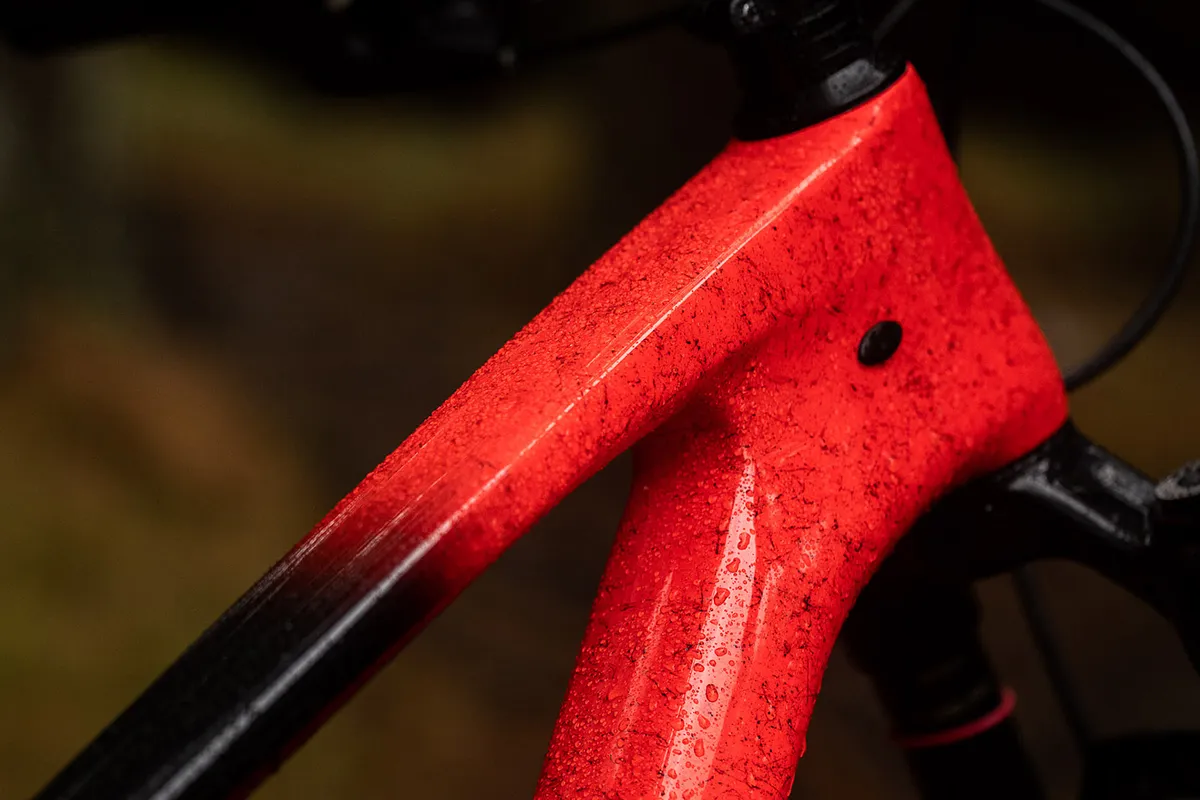
The Scalpel has a Proportional Response Design frame, where there are size-specific chainstay lengths and seat tube angles designed to help keep the geometry balanced as the frames increase in size.
It’s made using Cannondale’s standard carbon fibre weave. The frame has in-built flex zones in the chainstays, further enhanced by their dropped position on the seat tube.
This, Cannondale claims, should boost control and reduce the amount of trail chatter transferred to the rider.
It has a press-fit 30 bottom bracket and tapered head tube, both in a bid to improve steering and pedalling stiffness, arguably where it matters the most.
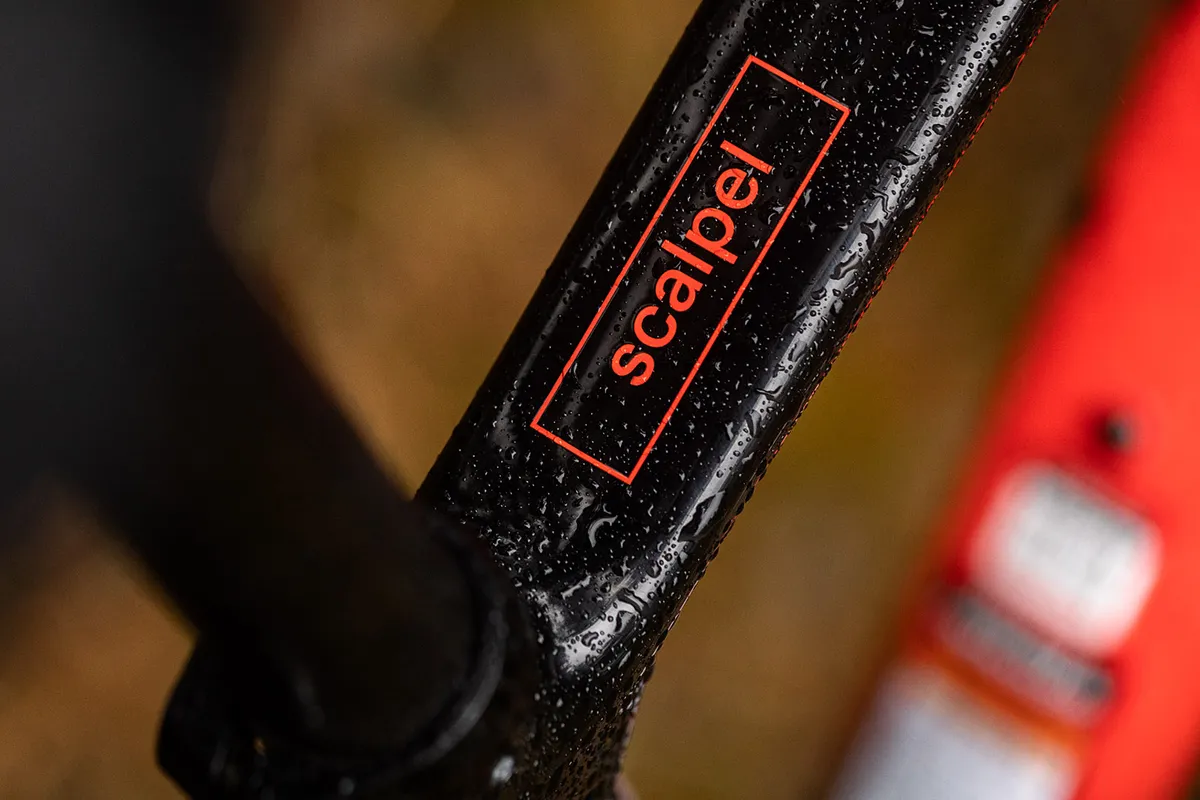
Its cables are routed internally, and feature internal guides to aid with speedy installation.
The entry ports can be converted so they’re compatible with both full-length housings and interrupted ones for those looking to reduce weight further.
There’s a 12x148mm Boost rear axle and SRAM’s Universal Derailleur Hanger (UDH).
My size-small test bike weighed 11.4kg without pedals.
Cannondale Scalpel HT Carbon 4 geometry
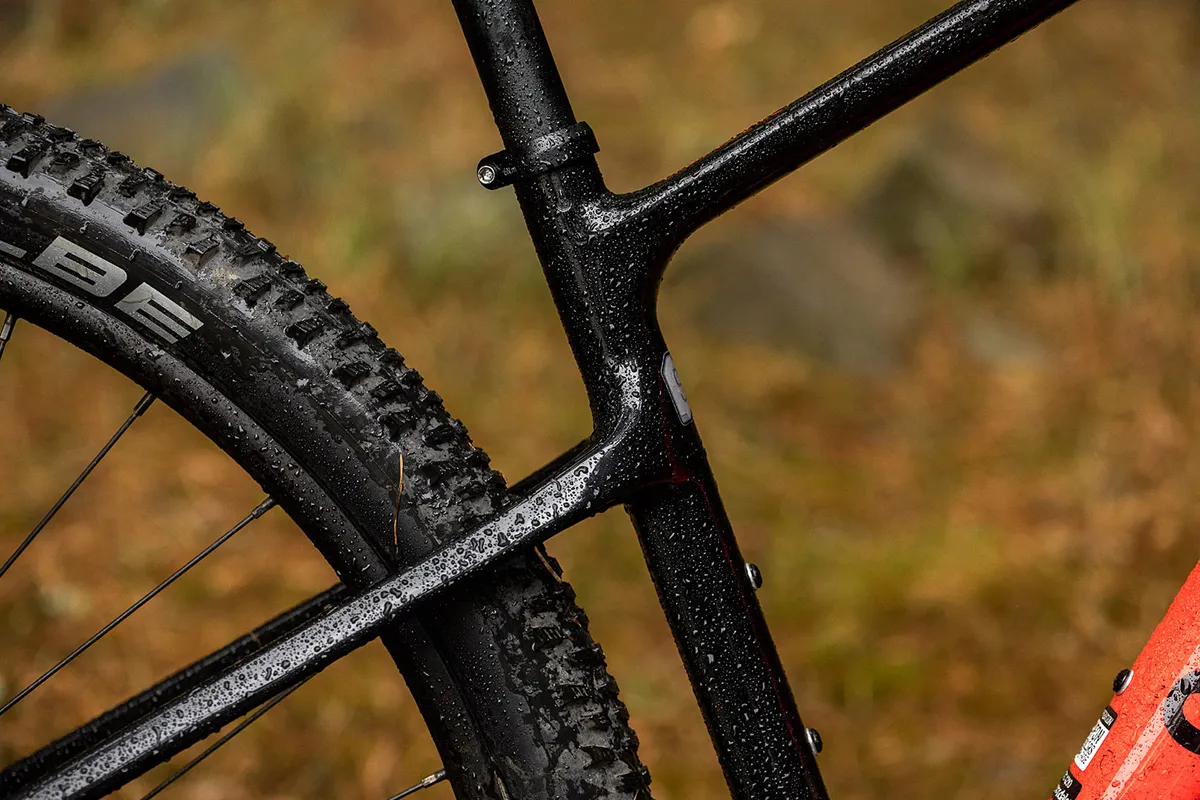
The Scalpel’s figures look almost anomalous on an XC race bike.
The size small I tested sports a 1,124mm wheelbase, 430mm chainstays and has a reach of 410mm, all coupled with a 67-degree head tube angle.
Cannondale claims these figures should improve handling through maintaining control and composure on rougher, faster, gnarlier trails.
As mentioned, the Scalpel’s Proportional Response Design sees chainstay lengths increase in 5mm increments for each bike in the four-size range, starting with the small’s 430mm and extending to 445mm for the extra-large.
This, Cannondale claims, is to “keep the rider centred between the wheels for incredible traction and handling”.
| | S | M | L | XL |
|---|---|---|---|---|
| Seat angle (degrees) | 73.2 | 74 | 74.6 | 75 |
| Head angle (degrees) | 67 | 67 | 67 | 67 |
| Chainstay (mm) | 430 | 435 | 440 | 445 |
| Seat tube (mm) | 390 | 440 | 480 | 530 |
| Top tube (mm) | 571 | 594 | 617 | 640 |
| Head tube (mm) | 99 | 110 | 122 | 135 |
| Fork offset (mm) | 55 | 55 | 55 | 55 |
| Trail (mm) | 10 | 10 | 10 | 10 |
| Bottom bracket drop (mm) | 62 | 62 | 62 | 62 |
| Bottom bracket height (mm) | 315 | 315 | 315 | 315 |
| Wheelbase (mm) | 1,124 | 1,154 | 1,183 | 1,214 |
| Standover (mm) | 748 | 785 | 814 | 850 |
| Stack (mm) | 602 | 612 | 623 | 635 |
| Reach (mm) | 410 | 430 | 450 | 470 |
Cannondale Scalpel HT Carbon 4 specifications
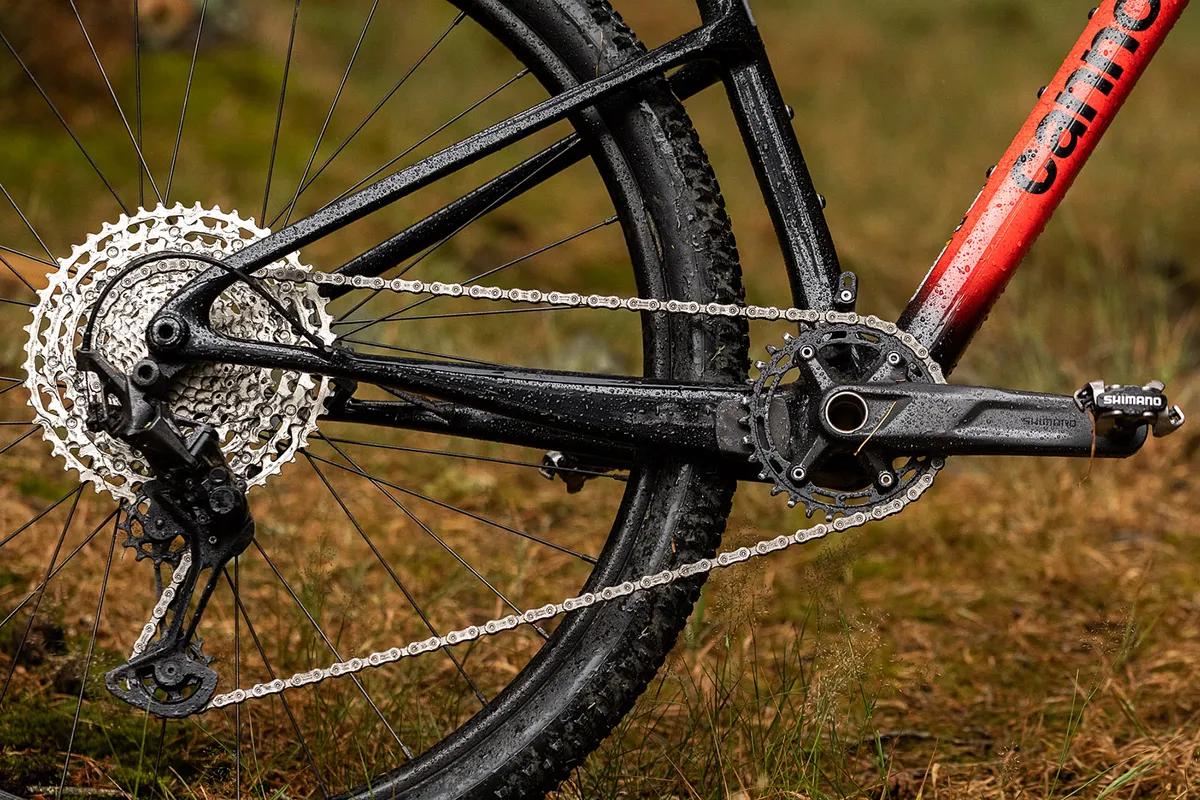
Given the relatively affordable asking price of the Scalpel HT Carbon 4, Cannondale has specced some impressive kit.
The icing on the cake has to be the RockShox SID SL 100mm fork. This model has the Charger Race Day damper and skinnier 32mm stanchions in a bid to shave a few extra grams, rather than the beefier 35mm version on the regular SID.
It also features a remote lockout, operated by a 1x-style lever fitted to the left-hand side of the handlebars.
Shimano’s two-piston Deore MT501 brakes use 160mm rotors front and rear. There’s also a 12-speed Shimano Deore drivetrain with the brand’s 10-51t cassette and 32T chainring.
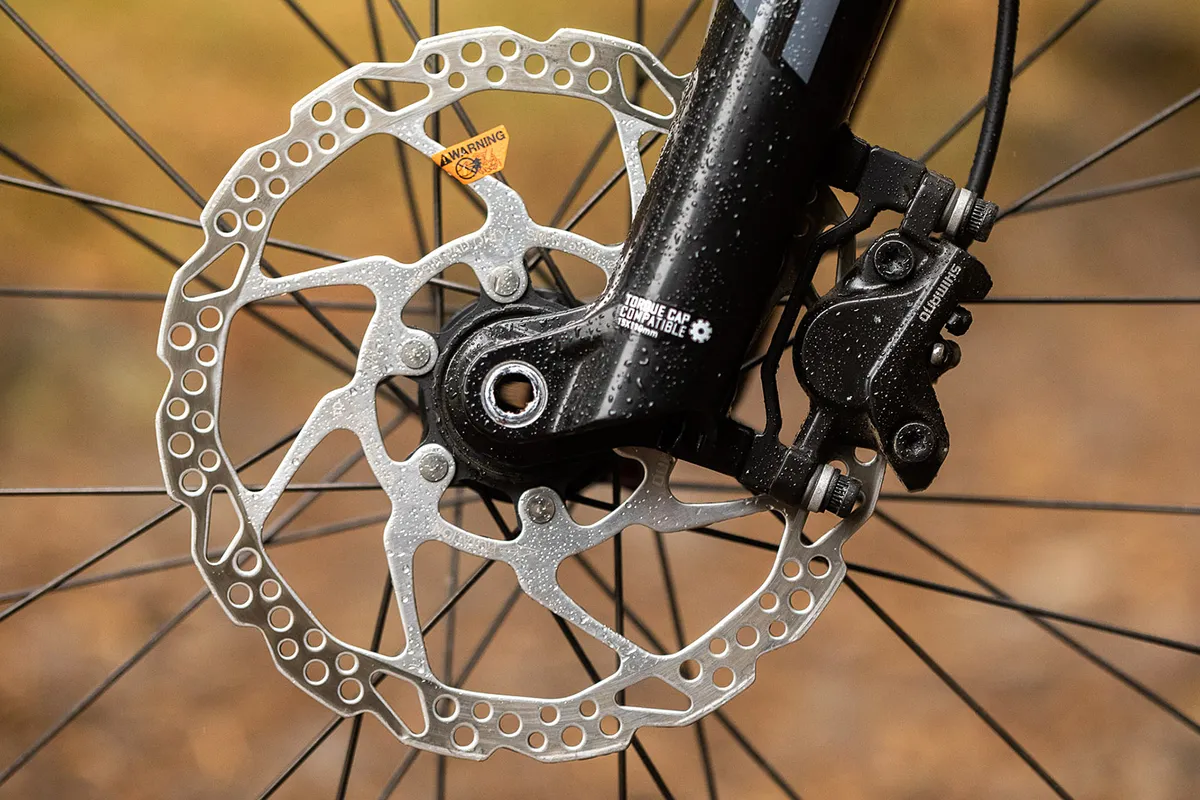
Parts including the bar, stem, seatpost and saddle are all Cannondale-branded in a bid to make some cost savings.
Two sets of bottle bosses are located on the seat and down tube, and a protective guard covers the chainstay.
WTB STX i23 rims are laced to Shimano MT410 hubs, and are wrapped in Schwalbe rubber. Up front is a Racing Ray EVO TwinSkin 2.25in-wide tyre, matched with a Racing Ralph EVO SnakeSkin model, also 2.25in wide. Both front and rear tyres use Schwalbe’s Addix compound.
Cannondale Scalpel HT Carbon 4 ride impressions
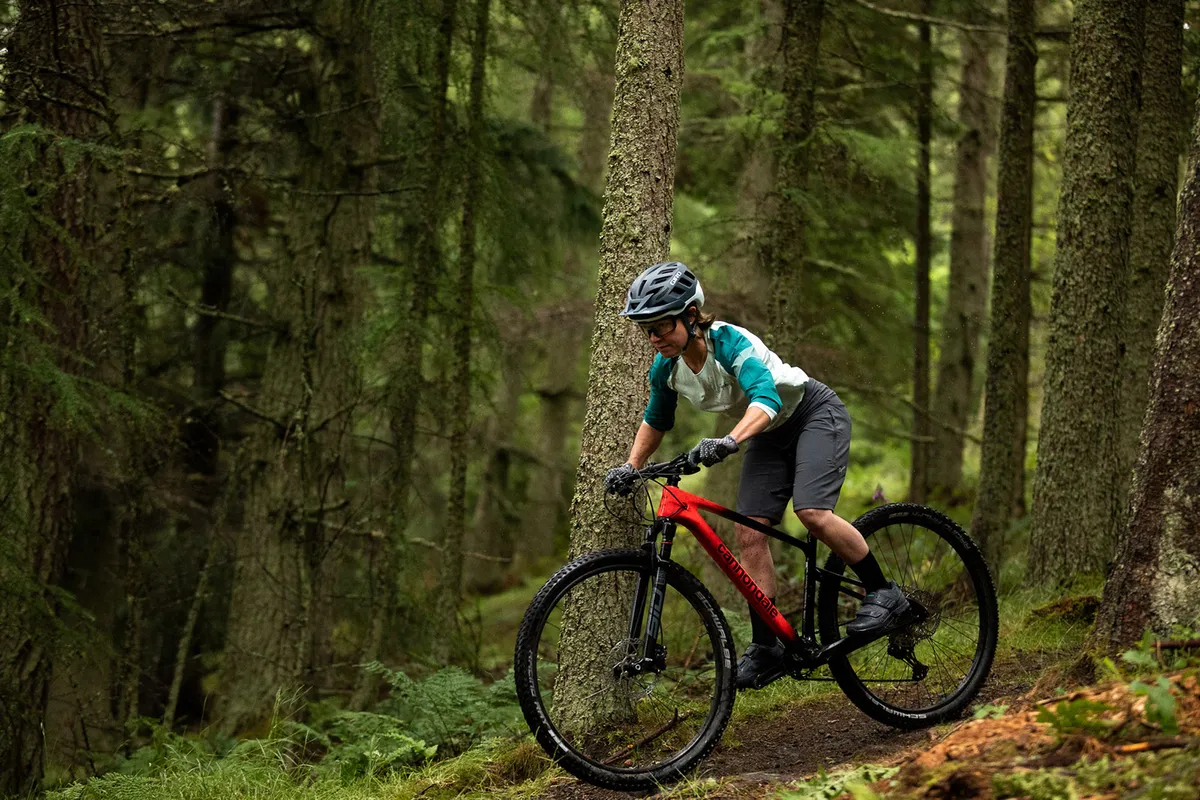
It certainly looks as though Cannondale has responded to the changing nature of XC with a fairly radical race bike.
I put it to the test in Scotland’s Tweed Valley, home to the 2023 cross-country and marathon world championships, to see whether the ride lives up to the claims.
Cannondale Scalpel HT Carbon 4 climbing performance
The Scalpel HT has a far plusher and more playful ride for a hardtail mountain bike than I was expecting.
Most notable was how smooth it felt to pedal over rumbly fire roads and rocky trail-centre surfaces in comfort and with loads of traction.
On rocky climbs, the tyres felt as though they tracked the ground closely, a sensation helped by the sculpted flex zones of the rear triangle.
The SID SL fork’s smooth and responsive action helped, too. I found keeping the fork unlocked helped maintain momentum over rough terrain. When the trail smoothed out or I was riding a paved road, the option to lock it out via the bar-mounted lever was equally invaluable.

Along with being comfortable, you can have a huge amount of fun on the Scalpel, even when climbing. Its rapid acceleration and rear-triangle compliance over rough sprint sections meant building and maintaining speed was relatively easy and addictive.
The Scalpel's light weight made being able to lift the front wheel for a manual over enticing features lining the edges of the trails easy and rewarding.
Thanks to the wide-range rear cassette and small 32t chainring, I was able to winch up the steepest climbs, but also quickly select the right gear for short punchy climbs, which helped maintain speed.
Despite the relatively steep seat tube angle, I did have to push the seat as far forwards in the rails as possible to improve pedalling performance and better distribute my weight between the saddle and grips.
I also had to swap out the Cannondale Swoop saddle after the first ride because its shape didn’t suit my anatomy, but it might not be a problem for everyone.
Cannondale Scalpel HT Carbon 4 descending performance
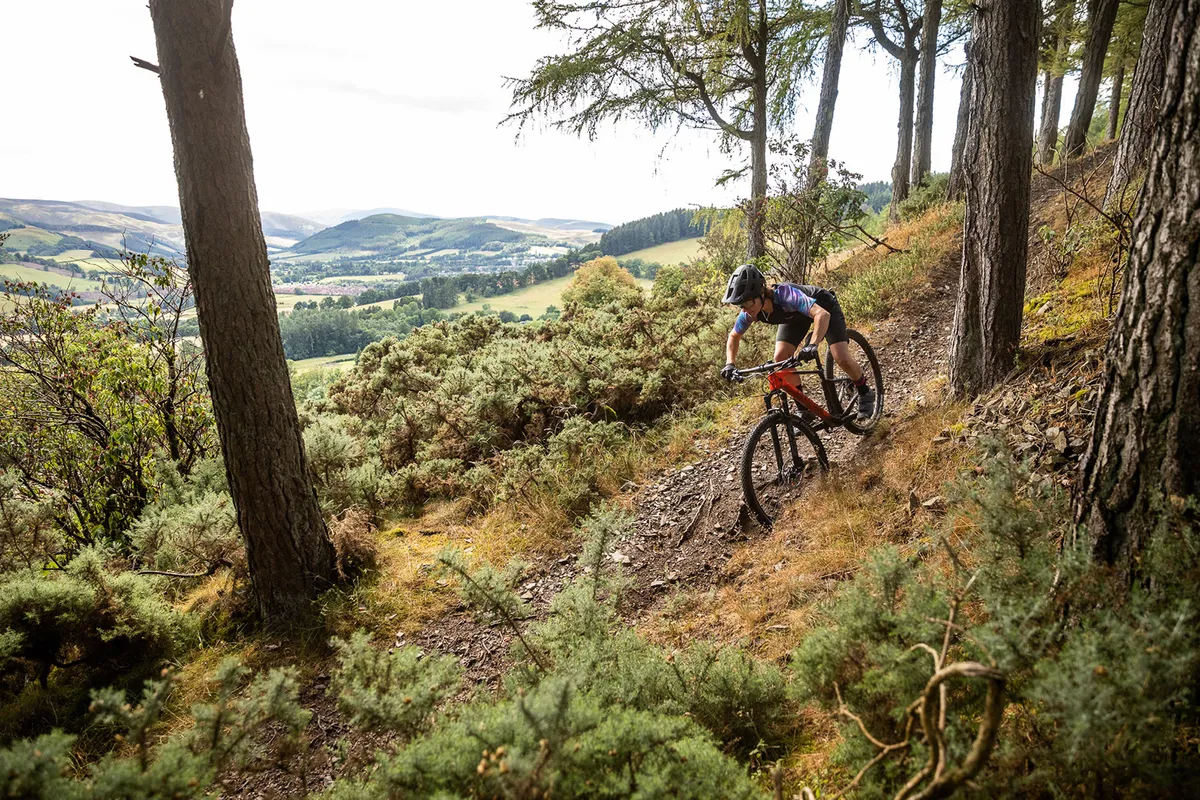
Many cross-country race-focused hardtails are built for rigidity and efficiency, but I learnt quite quickly when riding the Scalpel that outright stiffness isn’t always the quickest – or most comfortable – design.
While not having the luxury of rear suspension, the Scalpel invited me to pop around and play on the trail’s features, boost off natural kickers and have fun squaring off turns and railing berms.
Because it wasn't beating me to a pulp thanks to the skinny 27.2in seatpost and flex zones in the rear triangle, it allowed that headspace and freedom to have fun.
I found the 75mm-length stock stem at odds with the rest of the bike’s geometry. It affected the bike’s geometry on up and downhill switchbacks, making it feel slightly awkward.
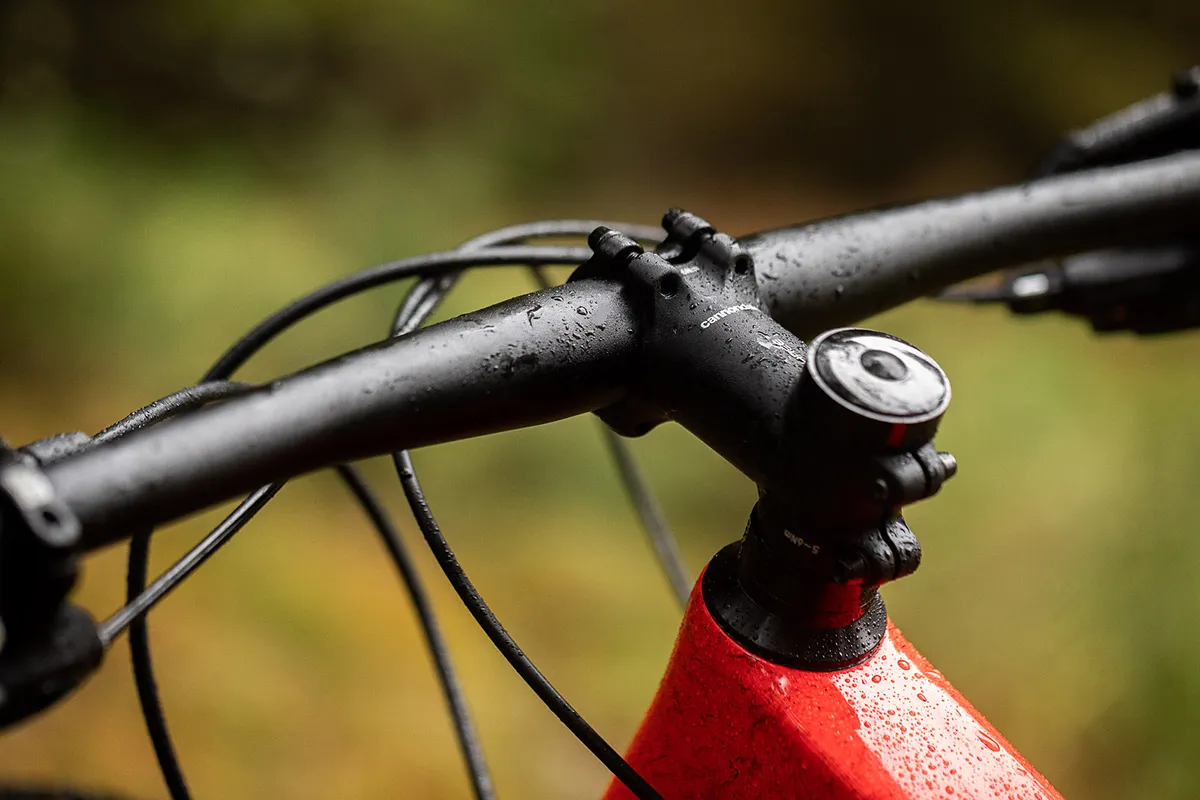
I fitted a shorter 55mm stem, and the difference was marked. With the shorter stem, I was charging confidently down some pretty technical enduro off-piste trails, losing only a narrow margin of time to the full-suspension bikes I’ve ridden on the same tracks.
While the shorter stem, high stack and slack head tube angle make the rider sit more upright compared to a customary low over-the-front, cross-country aero position, the bike feels well balanced when descending.
I’d almost go as far to say it has the intuitive handling and good control of an enduro bike, and certainly complements the frame’s smooth-feeling ride.
As on the climbs, the SID SL’s smooth and well-damped travel certainly helped here, and I was surprised how far and fast the 32mm chassis could be pushed before it started to feel flexy.
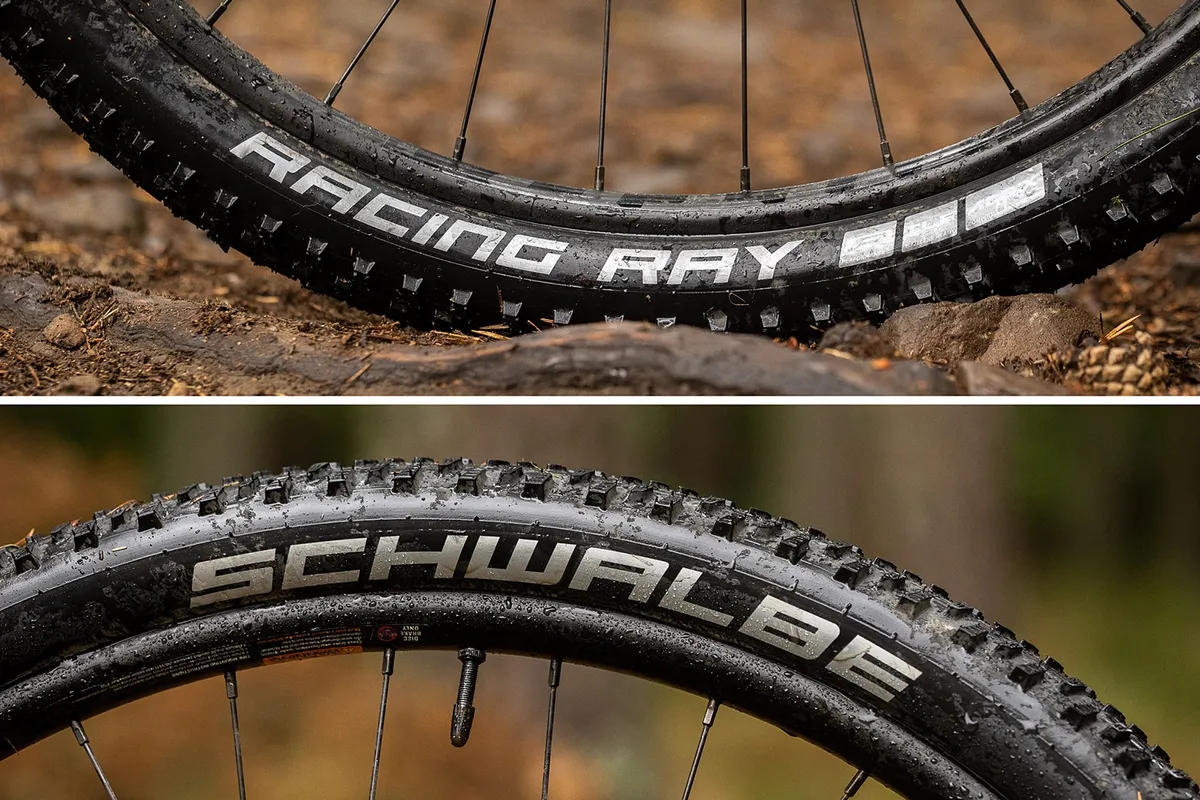
Schwalbe’s Racing Ray and Ralph tyre combination provided plenty of grip and encouraged me to have the confidence to lean the bike over in turns and ride with a playful nature.
Alongside that impressive cornering control, they offered plenty of grip on greasy trail-centre surfaces, managing to blend rolling speed with outright traction.
The Shimano Deore brakes have the classic responsive feel with a good amount of bite under hard braking when descending.
However, their pads did move in the calipers, causing a rattling sound when dragging the brakes over stepped sections, the noise and vibration of which could be off-putting for some.
Adding to the noisy ride was the amount of chain slap. Despite checking the derailleur’s clutch was engaged correctly, I couldn’t silence the Scalpel on rough terrain.
How does the Cannondale Scalpel HT Carbon 4 compare to the Specialized Epic Hardtail Comp and Rockrider’s MTB Race 900 Team Edition?
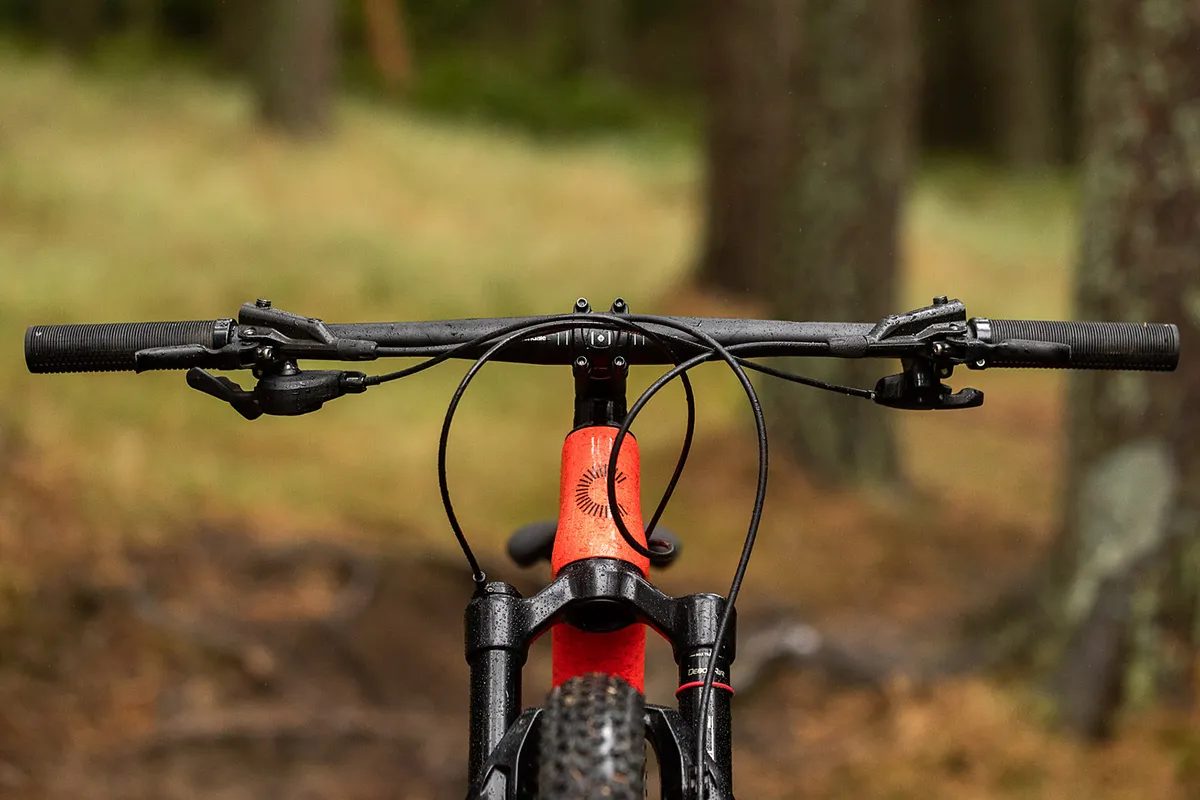
Riding the Cannondale Scalpel, Specialized Epic Hardtail Comp and Rockrider MTB Race 900 Team Edition back-to-back highlighted how important subtle differences between bikes can have a significant effect on how they ride.
Although the generalised assumption that the lighter the bike is, the faster it will be on the climbs is true for road riding and smoother off-road sections, these three bikes prove weight isn’t the only factor to judge a bike’s climbing potential against.
The lightest-weight Rockrider (9.4kg, size small without pedals) proved to be almost prohibitively rigid on fast, rough climbs, where its frame was uncompromisingly stiff, reducing speed, control and comfort.
The middle-weight Epic Comp (10.44kg, size small without pedals) was quicker again. Its frame and parts did a good job of improving speed via compliance and comfort, but it still couldn’t topple the Cannondale.
Despite its 11.4kg weight (size small without pedals), the Scalpel’s highly compliant frame and responsive fork made all the difference. Climbing seated and sprinting up out of the saddle were smooth-feeling, with the rear wheel tracking over rough ground well without losing traction.
Given the 2kg weight difference between these three bikes, the fact the cheapest, heaviest Cannondale was quickest on both the climbs and descents was a surprise.
Of course, there’s more at play than just its weight and frame construction. Its geometry and proportional-length chainstays have their role, edging it ahead of these two bikes.
Cannondale Scalpel HT Carbon 4 bottom line
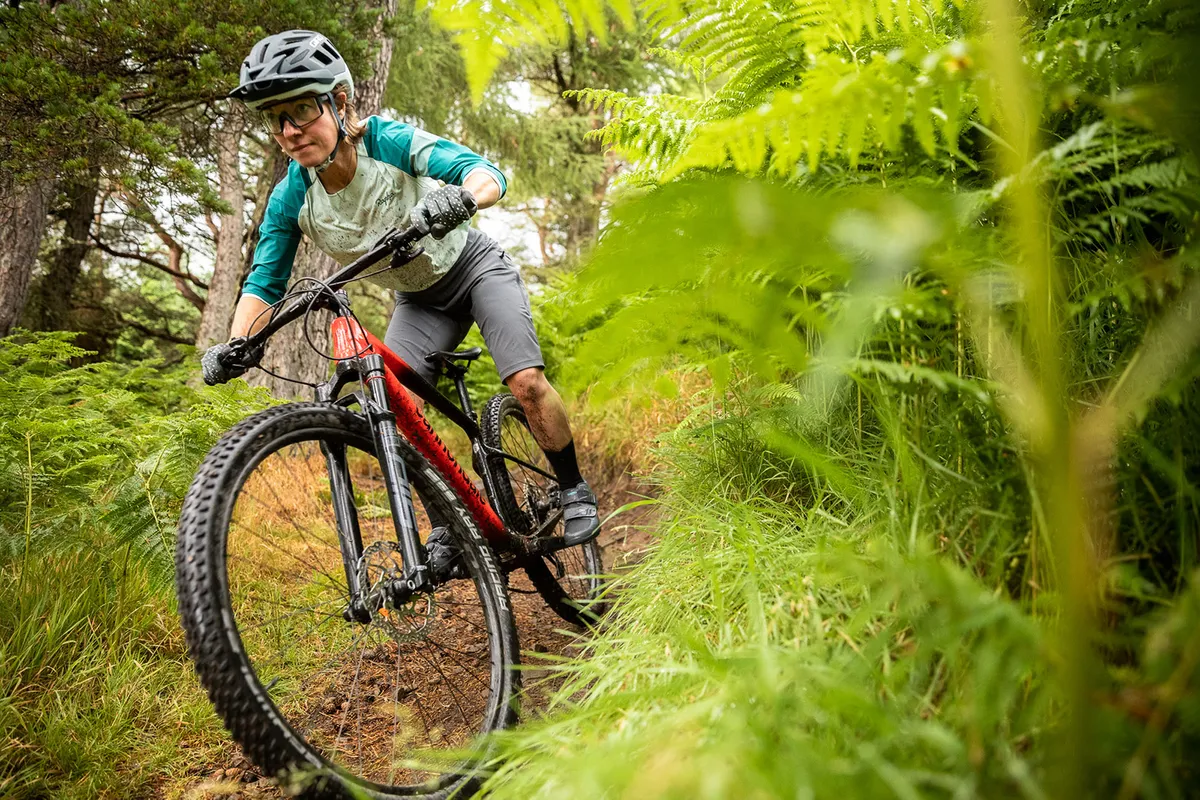
The Scalpel’s progressive geometry and creative design give it a plush, controlled feel, which helps keep speeds high where other bikes falter because they’re losing traction from being pinged around. That's something the Cannondale doesn’t suffer from.
This makes the Scalpel feel more capable over a wide range of trails, not just smooth, flowy singletrack; a factor that will dictate whether the Scalpel is right for you.
Its broad and impressive performance should mean racers looking for results and weekend warriors whose top priority is having a laugh will get a lot out of the Scalpel.
Product
| Brand | cannondale |
| Price | 4299.00 AUD,2699.00 EUR,2600.00 GBP,2300.00 USD |
| Weight | 11.4000, KILOGRAM (S) - without pedals |
Features
| Fork | RockShox SID SL, 100mm travel |
| br_stem | Cannondale 2 alloy, 75mm |
| br_chain | Shimano Deore, 12-speed |
| br_frame | Scalpel HT Carbon |
| Tyres | Schwalbe Racing Ray EVO (f) and Racing Ralph EVO (r) Twinskin 29x2.25in |
| br_brakes | Shimano Deore MT501/500, 160mm rotors |
| br_cranks | Shimano M5121, 30T, 55mm chainline |
| br_saddle | Cannondale Scoop |
| br_wheels | WTB STX i23 rims on Shimano hubs |
| br_shifter | Shimano Deore M6100, 12-speed |
| br_cassette | Shimano Deore M6100, 10-51, 12-speed |
| br_seatpost | Cannondale C3 alloy |
| br_handlebar | Cannondale 2 alloy, 760mm |
| br_bottomBracket | Cannondale Alloy PressFit 30 |
| br_availableSizes | S, M, L, XL |
| br_rearDerailleur | Shimano XT |
